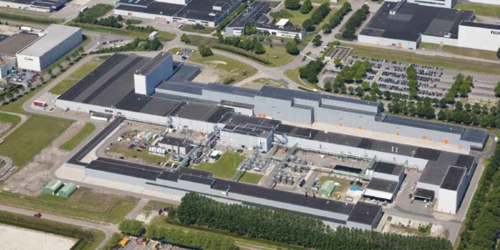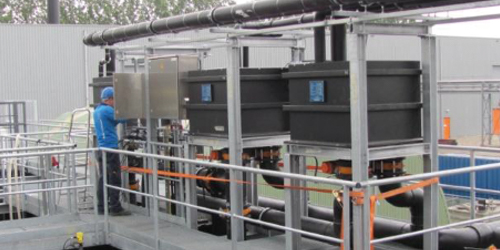Examination, testing and purification of industrial water for reuse

About Fujifilm
Fujifilm Manufacturing Europe in Tilburg mainly produces photographic paper and photosensitive aluminum sheets. These plates are used in printing works to print large newspaper runs.
When the factory was built, a new production line was also installed, making the factory potentially the largest offset plate factory in the world. Ecological offset printing plates are produced and the new production line has an afterburner that is powered by natural gas and waste gases from the plant. The energy generated is completely returned to the production process. Fujifilm also develops membranes in Tilburg that generate energy from the current between salt and fresh water.
Our project
Fujifilm’s business processes require water of a specific quality. In particular, water is used for the production of photo paper and offset printing plates (approximately 1.600.000 m3 per year). First, the water must be pumped up and then the iron need to be removed so that it can be used as process water for the production of photo paper and offset plates.
Among other things, nitric acid is used in the production of offset printing plates, a substance that contains a lot of nitrate. The expansion of the offset plates factory meant an increase in the nitrate-rich waste water.
Reduction of waste water and nitrate levels
“The costs of the water board for the treatment of waste water have been rising for years.”
The discharge permit brings the necessary requirements. For example, Fujifilm must reduce the volume of discharged water into the sewerage system and the nitrate content of the waste water must be reduced as well.
To comply with this, RWB has been working with Fujifilm for many years to investigate, test and purify the process water. Together, methods have been developed to reuse waste water from the factories and RWB is still involved in the maintenance of the 1984 process water installations. RWB was responsible for the expansion of water treatment for the new PS plate factory.
This extension has been achieved and includes an improvement of existing treatment, a new waste water treatment to increase the production capacity and an investigation of the possibilities for reuse of the waste water.
What is realized?
Our customer speaks
“The costs of waste water treatment have been rising for years. The current capacity of the municipal waste water treatment plant nearby has reached its maximum. Moreover, tightening of discharge rules would require adaptation of the current treatment system. Such an adjustment would increase the cost of our waste water treatment. Therefore it was the right moment to think about an expansion of our own wastewater treatment plant and to utilize the possibilities in the field of waste water reuse.”
Fujifilm Manufacturing Europe


“A unique type of waste water with specific pollution”
A challenge because of the water to be treated and the reduction of the ecological footprint.
Because there are many unique types of waste water where no proven technology is available, RWB has its own test facilities. With Fujifilm, the technology invented has been tested with the medium and various situations have been simulated before construction is carried out.
Also make your waste water treatment more sustainable?
More information about our activities within the communal wastewater sector? Feel free to contact us via the number below or use the contact form.






